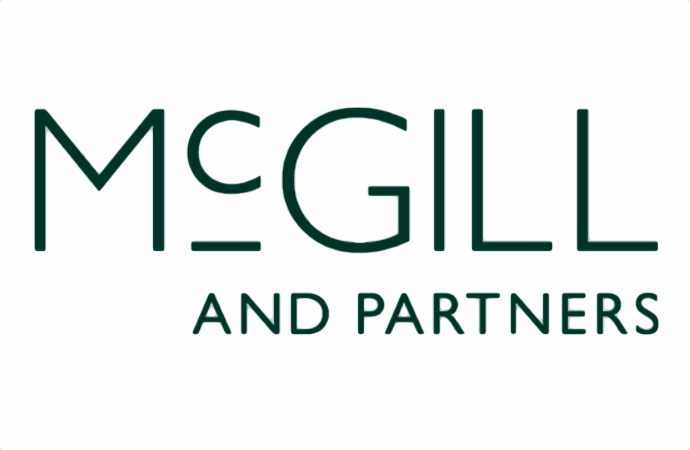Parametric triggers in risk transfer can be a powerful tool, offering an effective way for insureds and reinsureds to secure responsive coverage that can be an “attractive and complementary” alternative to indemnity-based products, senior executives at specialty insurance broker, McGill and Partners, told us recently.
 Transparency is a key factor in parametrics, which instils confidence in policyholders. While they often require minimal information or input to work as designed, McGill and Partners views parametric insurance as a powerful mechanism capable of delivering broad coverage and paying claims rapidly and with little fuss, when most needed.
Transparency is a key factor in parametrics, which instils confidence in policyholders. While they often require minimal information or input to work as designed, McGill and Partners views parametric insurance as a powerful mechanism capable of delivering broad coverage and paying claims rapidly and with little fuss, when most needed.
James Gunn and Nicky Payne, both reinsurance specialists at McGill and Partners, explained in a recent conversation with Reinsurance News that parametric triggers can be used to cover direct loss or damage, as well as the impacts of major events.
For example, a retail client equipped with parametric protection against the eruption of a nearby volcano would receive their claim regardless of whether the impact of a qualifying eruption was incurred in damaged property or business interruption losses.
“The fact a parametric product can be placed with minimal information enables a placement to be structured quickly and efficiently, with no onerous information requests,” explained McGill and Partners’ Gunn.

“The product can be effectively structured on a traditional basis (insurance or reinsurance) or in a derivative form whichever is most suitable.”
In the wake of Winter Storm Uri and the European Floods, the London-based speciality insurer has in fact seen clients seek out a more index-based product.
“We look to understand and mitigate the inherent basis risk in these products,” Payne said.
“Parametric products are a powerful mechanism when fast and efficient recovery is needed or is preferable – the speed of pay out can mitigate or reduce loss development thereby having a positive effect for the insured.”
Capacity is not an issue either and Gunn told us that, “Meaningful limits are available to address the larger capacity challenges of our clients.”
Gunn also noted that this doesn’t mean parametrics are only for larger transactions.
“As the structuring costs are not onerous it can also be used to efficiently address smaller challenges,” he explained.
Parametric triggers have also become more in-demand thanks to the pandemic, which has heightened awareness of the often-underinsured threat of business interruption.
 Payne commented that, “The parametric product creates certainty for the client and eliminates questions on whether certain assets or underlying coverages are within scope, something very topical during Covid.”
Payne commented that, “The parametric product creates certainty for the client and eliminates questions on whether certain assets or underlying coverages are within scope, something very topical during Covid.”
In addition, parametric structures are attractive to newer sources of capital in the insurance and reinsurance market, the McGill and Partners executives said.
With Payne further explaining that, “New capital is also seeking more ways to get closer to the original risks and the product takes it either onto the insurance programme or one step back via reinsurance.
“Certain capital is seeking ESG focused products and as these programmes are aggregated and tailored to class and territory, the product can be tailored to the non-traditional carriers.”
In response to the growing opportunity in parametric risk transfer, McGill and Partners has established a core working group encompassing colleagues from numerous areas of the industry.
“We have been working with both insureds and reinsureds, either securing single peril coverages on insurance programmes, or designing bespoke parametric coverage across Cedent portfolios,” Gunn said.
“This company is perfectly positioned to advise this kind of product, having worked across a single P&L, providing access to clients and capacity across all teams.
“This is expected to enable a unique perspective on structuring, with full support from our Catastrophe and Actuarial modelling teams.
“At McGill and Partners the parametric team structure each contract on a bespoke basis to reflect the needs of its clients, while time is spent looking into better understanding and mitigating the inherent basis risk in these products and believe they offer an attractive and complementary alternative option to our clients.”
Finally, Payne highlighted some areas of focus for the parametric side of the re/insurance industry, suggesting more transparency is required on actual transactions and deal-flow.
“New clients want to see the proof of concept, as there has not been widespread media coverage on placements and especially pay-outs,” Payne said, but added that, “Following Hurricane Ida, we have had confirmation of a significant pay-out to a Reinsured and carriers are ready to pay in line with the contract.”
“For certain clients, the parametric product can be a great alternative, but it is important to easily explain how a parametric product can fit within the clients’ core re/insurance structures and ultimately, to demonstrate its benefits.”


